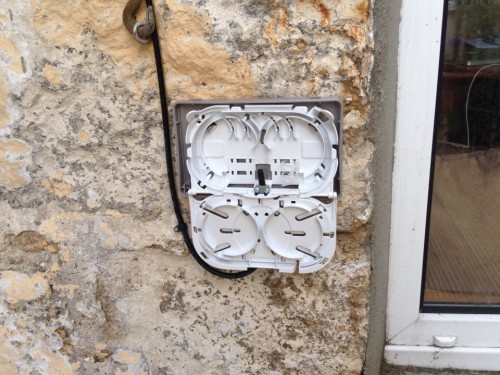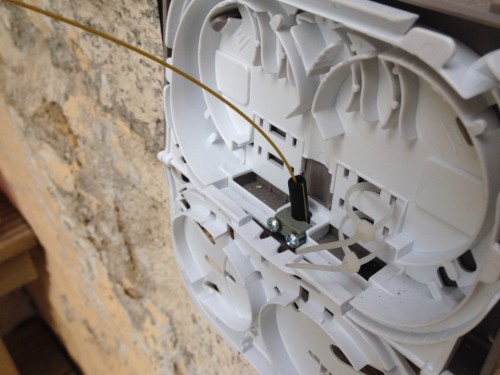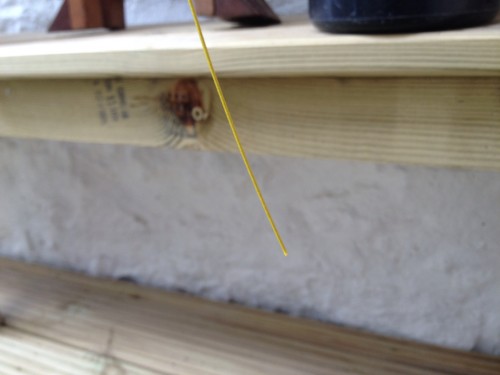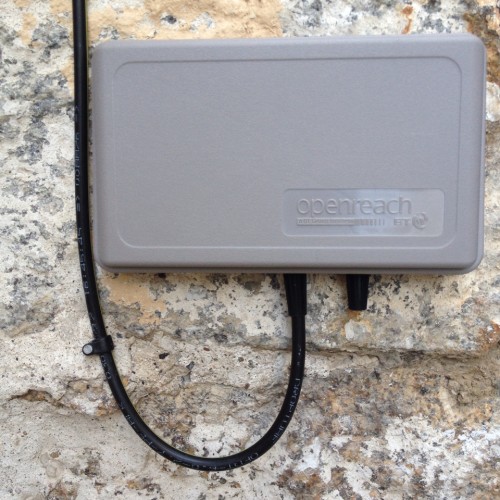When I first moved to Penzance in January 2012, BT Openreach’s fibre rollout was already well underway in Cornwall. The Penzance exchange was due to be enabled that May, and in my mind I thought that a few months would be well worth the wait. Well, it turned out to be more than a few months!
In February 2012 I registered my number with Superfast Cornwall to be informed when fibre of one kind or another (Fibre to the Cabinet – FTTC, or Fibre to the Premises – FTTP) would be enabled on my line. By the end of August this year (2013) I decided to check my number again as I hadn’t heard anything and there seemed to be a fair number of BT Openreach vans and roadworks in the area. The line checker came back with a friendly message saying that my property was eligible for FTTP – one of the few that would receive ultra-fast broadband.
After carefully reinstating my jaw from its newly found location on the desk in front of me, I looked up BT’s packages to find out how much it would cost. We currently pay £25/month (plus line rental) for a standard unmetered ADSL connection which on a good day peaks at 11.25Mbs down / 0.7Mbs up. BT offered a 160Mbs/20Mbs FTTP connection for £35 with free installation. That’s a lot of extra speed for not a huge sum of money – and when you work from home and are reliant on broadband any increase in speed, especially upload speed, can make a huge difference.
Naturally, I signed up. (Order date: 30 August 2013)
Installation of FTTP
I was given two dates for the installation. The first visit would be for the fibre to be run to our house on 20th September, then an engineer install the remainder of the fibre into the house and to connect up the new fibre modem on 1st October. I’d waited this long, so thought that those dates were reasonable.
Then a few days later I received a call from BT Openreach saying that they have had to delay the installation, and I was given new dates for the visits. The external work would be completed on 4th October, and the engineer visit would be on the 15th. A bit of calendar re-shuffling, but still OK. A tiny part of me wondered if it would even be possible, and the dates would march off into the distant future.
I was wrong.
This morning (20th September) at about 9am, there was a knock on the door. “Hello, I’m here to install your fibre broadband”.
The “external” appointment, I was told, meant that it was optional for me to be at home. But be warned – that’s not always true. In the case of our house, we have a locked rear courtyard which we needed to let the Openreach engineer into. It can also be helpful if you are in to help the installer know where you would like the fibre to enter your property. They also tend to respond favourably to offers of tea.
What happens during the “external” fibre installation appointment?
An armoured cable needs to be run from either the pole (in my case) or underground to your property, terminating in a small box called a Consumer Splice Point (CSP) over or near the point where the fibre enters a hole in your wall/window casement.
Here’s mine, taken during installation:

Bear in mind that the steel-reinforced outer cable cannot be bent along a right angle – there must be smooth curves for it to turn a corner, and so this may affect where the cable is installed.
Once the armoured cable and CSP are in place, then the fibre itself is “fusion spliced” at the fibre terminator on the pole/duct/cabinet (delete as appropriate) and “blown” with compressed air down the cable. As I typed this, that’s just what they did:

And then a quick photo of the end of the fibre optic:

And finally, the completed CSP, ready for the second BT Openreach visit:

The BT Openreach engineers who undertook the installation were great – professional and courteous. Details of the next stage in a few weeks time. [Update] Find out about stage two of my FTTP installation.
